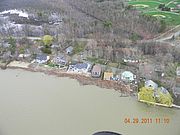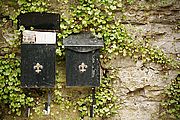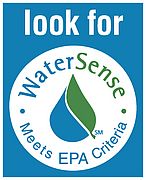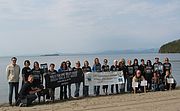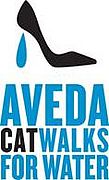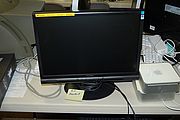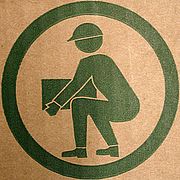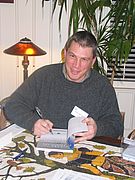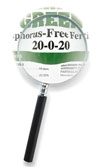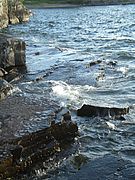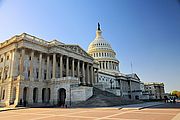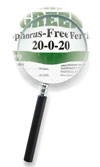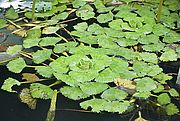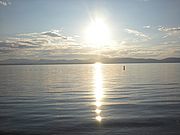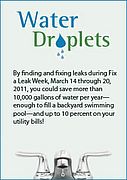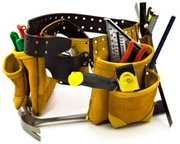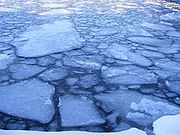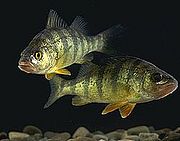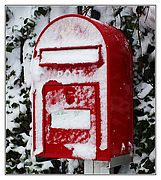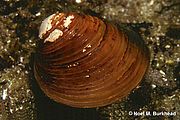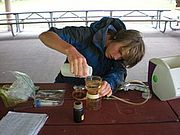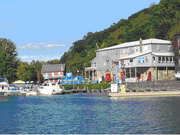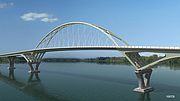Lake Champlain reached new heights this spring, cresting at 103.2' on Friday, May 6th, shattering the previous record high level in May of 1869 (~102.1’). High water has inundated homes, displaced people, closed roads, triggered mudslides, and washed sewage, litter and debris into the lake. As of this writing, tons of sediment are flowing into Lake Champlain as wind, waves and high water erode stream banks and lakeshore. The Lake Champlain Ferry from Essex to Charlotte is closed because the landing is under water. The ferry at Crown Point is still running but Vermont roads to the ferry are closed on the south and are restricted to one lane from the north. Amtrak service from Montreal to Schenectady, NY has been interrupted. Traffic along the Route 2 causeway between Grand Isle and Colchester is reduced to one lane as work crews repair damage. Damages are expected to be in the millions. Both Governors Cuomo and Shumlin have declared states of emergency for portions of the lake shore. The Canadian Forces have been called out to assist in flooded areas north of the border... Read...
News from Selected Month
If you’ve had an address change recently, please send us an email so we can update your files and ensure you receive news on lake issues and LCC’s work. Our primary form of communication with members is through email. By mailing electronically we save time and resources and reinforce the stewardship ethic of our mission... Read...
Drip. Drip.Drip. It’s easy for the sound of a leaky faucet to become just part of the background noise in your household. With a large body of fresh, relatively clean water like Lake Champlain so close by, water conservation often doesn’t seem like a meaningful environmental issue. Yet there are environmental consequences of ignoring that drip... Read...
Join Aveda representatives, local stylists, and others for a four mile walk from LCC’s new digs at 208 Flynn Avenue along the Burlington bike path and back. The walk is part of Aveda’s global initiative that acknowledges the daily struggle of more than one billion around the world who do not have access to clean water. The Lake Champlain Committee is one of Aveda’s 35 global partners in this effort to raise funds and awareness about the need to protect and improve water quality... Read...
Stylists and students from O’Brien’s AVEDA Institute and O’Brien’s salons are teaming up to produce a fun night of hair and fashion! Students will create looks based on themes of Earth, Air, Fire and Water and dress each model head to toe in recycled garments. Doors open at 6:30 PM and the show starts at 7 PM on Tuesday, April 19th at Club Venue in Colchester on Porter’s Point Road (right near the Sunset Drive-In)... Read...
If you’re an active LCC member in need of outdoor gear, you might want to head to Eastern Mountain Sports for their annual Club Day. People who are involved with the Lake Champlain Committee can receive 20% off all national brand products and 25% off EMS products... Read...
The interior spaces of our new office provide opportunities to visually convey our mission of protecting lake health and access. We are looking for the following items to help our work and enhance the space: Flat panel computer monitors with 20 inch screen or larger, Laser desk top color printer, Tall lateral file cabinets (65 inches or taller) in good condition...
Thanks to the many people who assisted LCC with our move to 208 Flynn Avenue in Burlington. We couldn’t have done it without the generous time and support of Dave Farrington, Bren Alvarez and the wonderful building, painting and moving team from BrickBox Company who did the fit-up and oversaw our move... Read...
Lake Champlain Committee Staff Scientist Mike Winslow has been invited to serve on a workgroup guiding efforts to develop a revised Lake Champlain pollution loading model. The work group will provide input to the Environmental Protection Agency (EPA) and their consultants, TetraTech as they begin efforts to develop a new Lake Champlain clean-up plan (TMDL)... Read...
In Montpelier two bills are pending that could use citizen support. The first is a bill to limit the sale and use of lawn fertilizers (H.26). The bill would require homeowners to have a soil test that showed their lawns needed phosphorus prior to applying phosphorus fertilizer. Stores selling phosphorus fertilizer would have to display it separate from phosphorus-free fertilizer and provide education materials noting that phosphorus causes water quality problems... Read...
The Lake Champlain Committee has moved closer to the lake! We are now located at 208 Flynn Avenue, Bldng 3 – Studio 3-F, Burlington, Vermont. Please make note of our new address. We are in a larger office complex that will provide us with better space to do our work and are just a half mile away from one of our Paddlers’ Trail day-use sites at Oakledge Park... Read...
The U.S. House of Representatives has approved an aggressive plan to significantly reduce the budgets of critical federal environmental programs. The budget proposed by the House slashed the Environmental Protection Agency’s budget by almost $3 billion (or 30%) from 2010 levels and included a provision that prohibits EPA from continuing its work to clarify which waters are protected under the Clean Water Act... Read...
The Lake Champlain Committee is joining with the EPA’s WaterSense Program to promote Fix a Leak Week – an opportunity for homeowners to find and fix residential leaks that waste more than 1 trillion gallons of water in America each year. Leaks can also account for more than 10,000 gallons of wasted water in an average home every year – enough to wash nearly 10 months’ worth of laundry. Conserving water saves money, saves energy, and helps reduce nutrient pollution in Lake Champlain.
Why is water conservation important even in the Lake Champlain watershed where water seems so abundant?... Read...
Following on a 2008 lawsuit from the Conservation Law Foundation (CLF) the Environmental Protection Agency (EPA) has agreed to rewrite the Lake Champlain phosphorus budget known as a TMDL. The TMDL established an amount of phosphorus that can be absorbed by the lake and then allocates allowable discharges between point sources like wastewater treatment facilities and non-point sources such as agricultural and developed land run off. About 5% of phosphorus loading to Lake Champlain comes from wastewater treatment facilities.
EPA determined that the existing TMDL did not include an adequate margin of safety and did not provide reasonable assurance that sufficient reductions in non-point source discharges could be achieved to allow more discharge from wastewater treatment facilities. Read...
The Vermont legislature is considering bills (H. 26 and S. 35) that would limit the amount of lawn fertilizers used in the state. Frequently, homeowners apply fertilizer in excess of what is needed by lawns. Excess fertilizer has detrimental affects on water quality. Phosphorus from fertilizer can reach water when some of it is spilled on sidewalks and driveways or when fertilize soil erodes. Once in the water it promotes algae blooms. Read...
The Lake Champlain Committee and environmental consulting firm Arrowwood Environmental have won a competitive grant from the Lake Champlain Basin Program to conduct an invasive species survey of Missisquoi Bay. In recent years, Missisquoi Bay has been the site of a number of new invasions. In 2005 water chestnut (Trapa natans) was found in the Misssisquoi National Wildlife Refuge. In 2009 variable- leaved water milfoil (Myriophyllum heterophyllum) was discovered. Variable-leaved water milfoil has not been seen in the Quebec portion of Missisquoi Bay, but surveys in 2010 left some ambiguity regarding the magnitude of the infestation in the United States portion... Read...
A new version of Opportunities for Action has been released. Opportunities for Action is the management plan that guides how federal and state resources are spent to protect and restore Lake Champlain. Regular revisions to Opportunities for Action are required under the Lake Champlain Special Designation Act that provides much of the funding for work on the lake. The newest version, released in December 2010, represents the third edition of the plan... Read...
LCC has been awarded a pollution prevention grant in the most recent round of competitive funding from the Lake Champlain Basin Program. LCC will conduct a water conservation education and outreach program working with multiple partners and in multiple venues to improve water quality in Lake Champlain. Preventing excess water use reduces treatment costs at waste water treatment facilities, increases treatment efficiency, and saves energy... Read...
Throughout the country municipalities and states have struggled over what to do with old or unneeded pharmaceuticals. Too often, they are simply flushed down the toilet, but sewage treatment plants aren’t necessarily equipped to remove them. As a result, the drugs end up in the water where they are still active. Additionally, unused medications often end up on the street, being sold illicitly... Read...
If you’re a skilled carpenter with time on your hands we could use your help! LCC is looking for several volunteers to tackle an interior job building walls and work counters for our office space. The project work will likely take place late winter through early spring. Interested individuals should contact LCC Executive Director Lori Fisher at lorif@lakechamplaincommittee.org or 802 658-1414. Read...
Winter often offers a frozen lake for skating, fishing, and myriad other activities. Throughout the winter you can watch for changes in the ice as it continues to grow, shrink, and move. Three phenomena that demonstrate the dynamic nature of ice are tension cracks, pressure ridges, and ice ramparts... Read...
Take a deep breath. In. Your lungs fill with cool, oxygen rich air. Out. The exhaled air has less oxygen, more carbon dioxide. The average adult at rest breathes twelve times per minute, all for the purpose of exchanging gases in the lungs, to bring oxygen to our blood cells. Fish need the same oxygen, but it is much more difficult to get from water. Respiration is the process by which gases are exchanged between the body and the outside environment. Respiration has two principal components: breathing or ventilation – the movement of an external medium (air or water), and gas exchange – the trade of oxygen and carbon dioxide between blood and that medium. Both ventilation and gas exchange are more difficult in water than in air... Read...
Let us know if there is anyone whom you think would enjoy getting our Ripples E-News bulletins and please, forward it on to colleagues, friends, and relatives that share your love of the lake. We welcome your comments and suggestions for topics to include in future issues. Click here to send us your feedback. Thanks! Read...
If you’ve had an address change recently, please send us an email so we can update your files and ensure you receive news on lake issues and LCC’s work. Our primary form of communication with members is through email. By mailing electronically we save time and resources and reinforce the stewardship ethic of our mission. We don’t give away or sell email addresses. To ensure that our email messages get through to your inbox, please add lcc@lakechamplaincommittee.org and the domain enews.lakechamplaincommittee.org to your safe/allowed list and address book. Thanks! Read...
Do you keep Lake Champlain in your heart through the year? LCC Staff Scientist Mike Winslow puts a Lake Champlain twist on Charles Dicken's 'A Christmas Carol'. Now you can hear him read his piece and see how the ghosts of the lake - Past, Present, and Future - helped change Ebenezer's outlook. Thanks to LCC member Greg Epler-Wood for his recording and sound editing efforts. Read...
The Rensselaer Polytechnic Institute Darrin Fresh Water Institute (DFWI) is leading a pilot project to assess the effectiveness of benthic barrier mats in controlling Asian clam (Corbicula fluminea), the newest aquatic invasive species in Lake George, NY. The pilot project is advised by the Asian Clam Rapid Response Task Force. Partners include technical experts from Lake Tahoe where spread prevention techniques for Asian clam are already underway. Read...
The Burlington Free Press reported that researchers from the University of Vermont (UVM) are conducting the first survey since the 1930s of lake whitefish populations in Lake Champlain, and the results have been promising. Whitefish are relatives of trout and salmon. Lake Champlain is near the southern edge of their habitat range. Up until the early 1900’s there was a strong commercial fishery for the species. However, declines in the quantity of fish taken led to closing the commercial market. When the UVM researchers surveyed historic spawning grounds in Missisquoi Bay and at Larrabees Point in Shoreham, they found no whitefish. Instead the fish seem to be spawning all throughout the Main Lake. Read...
Results from the Lake Champlain Committee's volunteer water monitoring program provide insight into the levels and locations of nutrient pollution. In 2010, significant algae blooms developed early during a July heat wave. Evidence of the bloom was reported from Burlington south to Port Henry, areas not usually associated with bloom conditions. These blooms cleared by mid-July. St. Albans Bay developed a bloom that persisted through much of July and into August. Blooms in Missisquoi Bay were less severe than in recent years and for the first time since 2007 no ‘high alerts’ (worrisome levels of actual toxins measured) were issued. Read...
The New York State Public Service Commission (PSC) conducted a series of public hearings about the proposal to place a cable underneath Lake Champlain to transport electricity to New York City. LCC testified about concerns regarding impacts to the lake and the overall need for the project. The PSC plans to hold evidentiary hearings in early 2011. LCC has applied for active party status in the case. The power line proposers must begin construction by fall of 2011 in order to qualify for federal loans. Read...
It was November of 2009 when the Champlain Bridge was suddenly closed for good due to structural weaknesses in the bridge supports. One year later the bridge is gone; destroyed in a controlled explosion last December. Debris from the original bridge has been removed from the lake, and construction has begun on a new bridge with an anticipated completion date of September 2011. According to the New York State DOT website, since early November, the construction activities at the site have focused on installing the bridge substructures, with work at all 7 piers and both abutments well underway. Fabrication of the steel bridge members is also progressing at a steel fabrication plant in Pennsylvania. The new bridge is being built by Flatiron Construction, a transportation construction and civil engineering firm based in Colorado. In the meantime, a ferry runs 24 hours per day transporting vehicles over the narrow stretch of Lake Champlain the bridge once traversed. Read...

